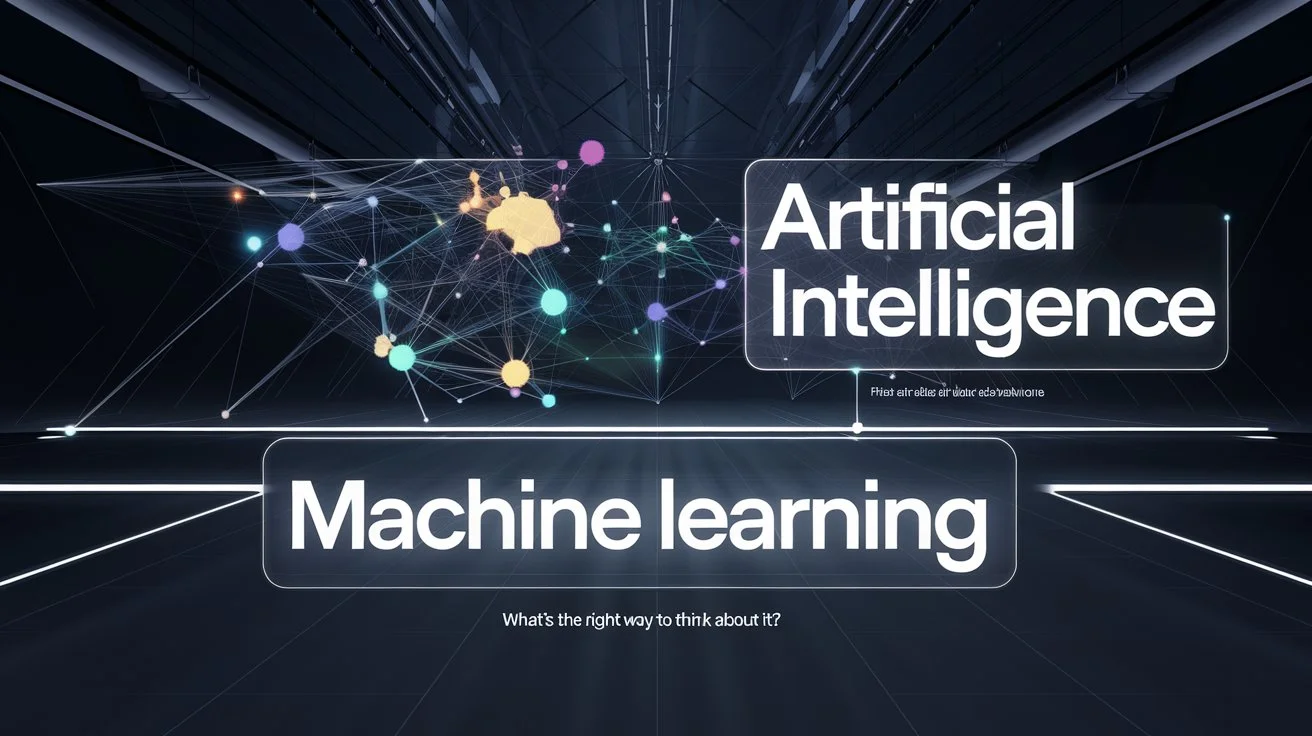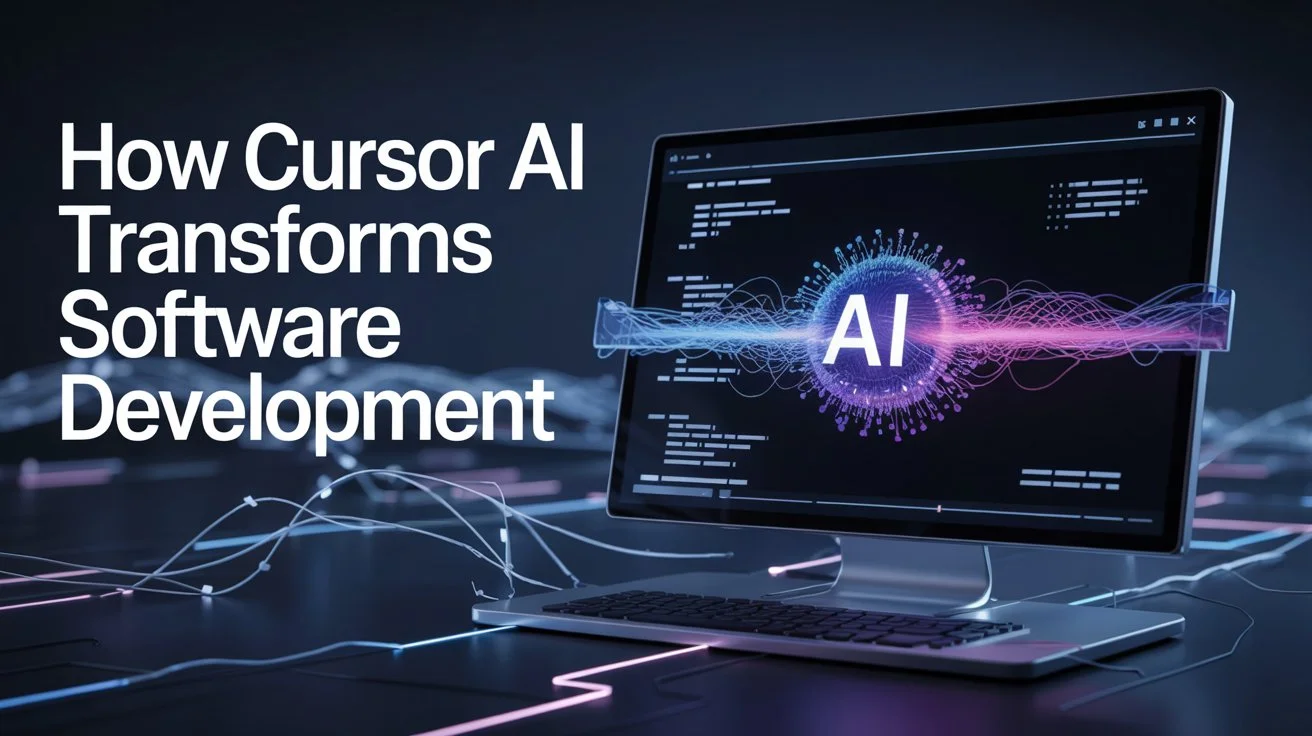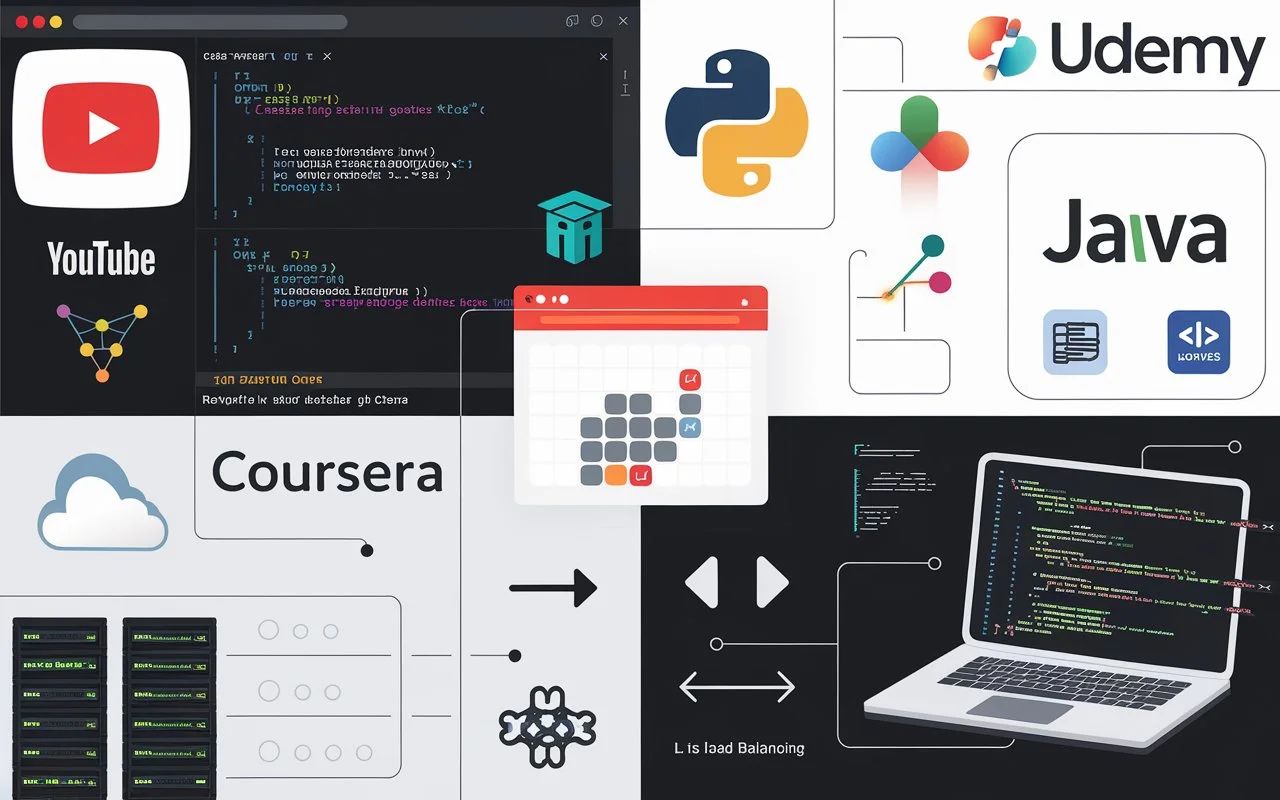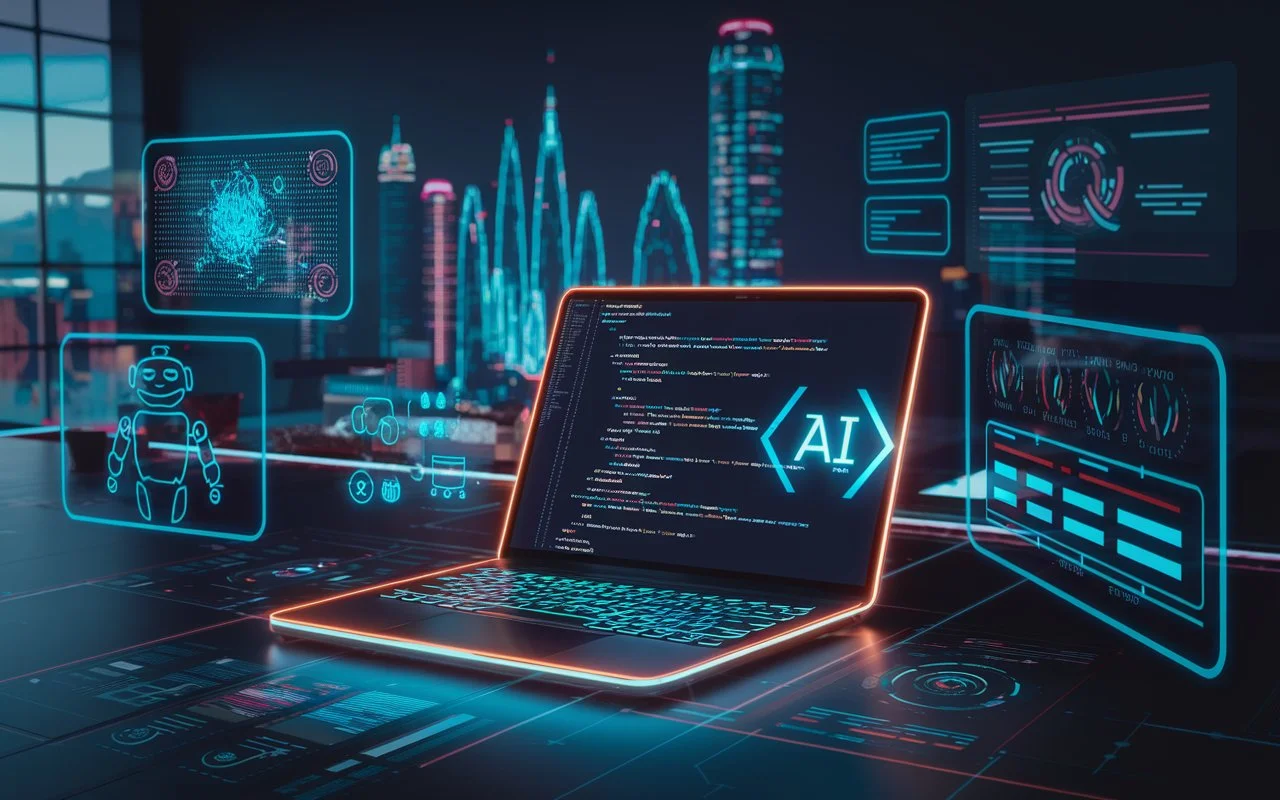
Top 5 Python AI Projects to Boost Your Career in 2025
Artificial Intelligence (AI) is revolutionising industries, from healthcare and finance to entertainment and e-commerce. With companies increasingly relying on AI-driven solutions, the demand for AI professionals is at an all-time high. If you are an aspiring AI developer, building hands-on projects is the best way to gain practical experience and make your portfolio stand out.
Python, known for its simplicity and extensive libraries, is the go-to language for AI development. Libraries like TensorFlow, Keras, OpenCV, and Scikit-learn empower developers to build intelligent systems efficiently. In this blog, we will explore must-have Python AI projects ranging from beginner to advanced levels. These projects will help you master AI concepts such as Natural Language Processing (NLP), deep learning, and computer vision while working on real-world applications.
Let’s dive in!
Beginner-Level Projects
1. Fake News Detection Using Machine Learning
Why is it Important?
Misinformation spreads rapidly across social media and news platforms, making fake news detection crucial. This project leverages machine learning to differentiate between real and fake news articles, ensuring the integrity of information.
How to Build It
- Data Collection – Use datasets like Fake News Net, which contain labelled real and fake news articles.
- Pre-processing – Clean the text by removing stop words, punctuation, and special characters. Tokenise and stem words using libraries like NLTK or spaCy.
- Feature Extraction – Convert textual data into numerical form using techniques like Term Frequency-Inverse Document Frequency (TF-IDF) or Bag of Words.
- Model Training – Train machine learning classifiers such as Logistic Regression, Naïve Bayes, or Random Forest.
- Evaluation – Assess the model using accuracy, precision, recall, and F1-score metrics.
Tools & Skills Gained
- Tools: NLTK, Scikit-learn, Pandas
- Skills: Text pre-processing, NLP, classification models
2. Image Recognition Using CNN
Why is it Important?
Image recognition is widely used in applications like healthcare diagnostics, facial recognition, and autonomous vehicles. This project introduces Convolutional Neural Networks (CNNs) for image classification.
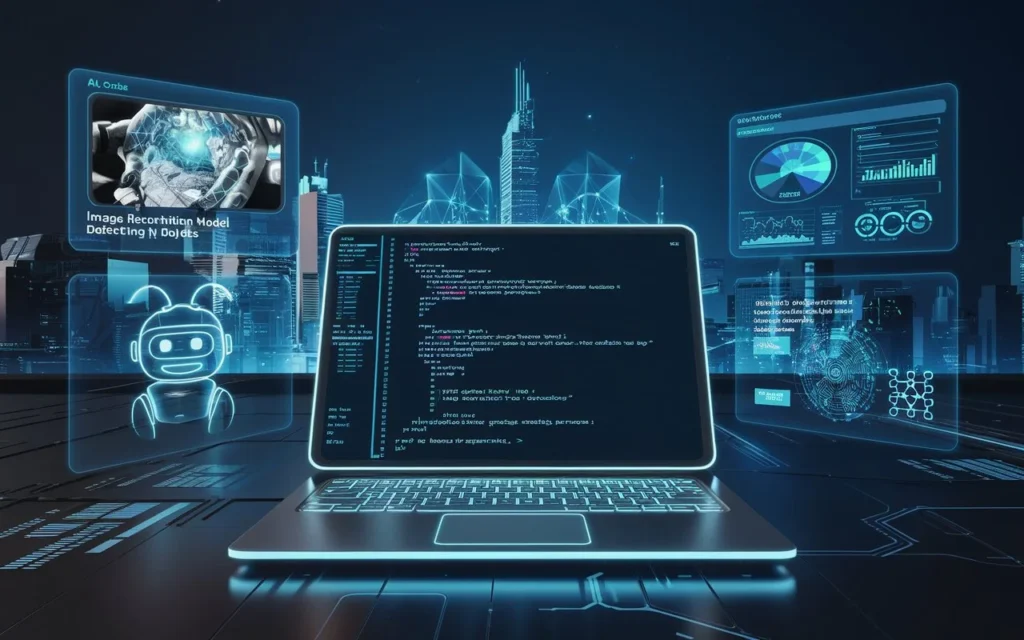
How to Build It
- Data Collection – Use datasets like CIFAR-10 or Cats vs. Dogs, which contain labelled images.
- Pre-processing – Resize, normalise, and augment images using OpenCV or PIL to enhance model performance.
- Model Architecture – Design a CNN model with convolutional, pooling, and fully connected layers using Keras or TensorFlow.
- Training – Split the dataset into training and validation sets, then train the CNN model.
- Evaluation – Measure model performance using accuracy, confusion matrices, and precision-recall scores.
Tools & Skills Gained
- Tools: TensorFlow, Keras, OpenCV, Pandas
- Skills: Image pre-processing, CNN architecture, model evaluation
Also Read: python project ideas
Intermediate-Level Projects
3. AI-Based Recipe Recommendation System
Why is it Important?
Recommendation systems are integral to digital platforms, from streaming services to e-commerce. This project suggests recipes based on available ingredients, demonstrating AI’s role in personalisation.
How to Build It
- Data Collection – Scrape recipes using BeautifulSoup or use datasets like Recipe1M.
- Pre-processing – Standardise ingredient names and handle missing values.
- Recommendation Algorithms – Implement Content-Based Filtering (matching ingredients) and Collaborative Filtering (based on user preferences).
- Model Training – Use cosine similarity to match user-provided ingredients with available recipes.
- Interface & Deployment – Develop a simple web interface using Flask where users can input ingredients and receive recommendations.
Tools & Skills Gained
- Tools: BeautifulSoup, Pandas, Scikit-learn, Flask
- Skills: Web scraping, data cleaning, recommendation systems
4. Chatbot with Sentiment Analysis
Why is it Important?
Chatbots enhance customer service by providing instant responses. By incorporating sentiment analysis, chatbots can detect user emotions and adjust their responses accordingly.
How to Build It
- Chatbot Framework – Use platforms like Dialogflow or Rasa to build a conversational chatbot.
- Sentiment Analysis – Integrate pre-trained models like VADER or BERT to analyse user emotions.
- Conversational Flow – Modify chatbot responses based on detected sentiment (positive, negative, neutral).
- Deployment – Develop a web or messaging interface for real-time chatbot interaction.
Tools & Skills Gained
- Tools: Dialogflow, Rasa, VADER, Transformers, Flask
- Skills: Sentiment analysis, chatbot development, AI integration
Advanced-Level Projects
5. AI-Powered Image Colorization
Why is it Important?
Restoring black-and-white images using AI has applications in film restoration and digital art. This project demonstrates deep learning’s ability to generate realistic colours.

How to Build It
- Data Collection – Use a dataset of coloured images and convert them to grayscale for training.
- Pre-processing – Normalise pixel values and resize images.
- Model Architecture – Implement a U-Net model or Generative Adversarial Networks (GANs) for image colourisation.
- Training & Evaluation – Train the model using mean squared error loss and evaluate using Peak Signal-to-Noise Ratio (PSNR).
- Deployment – Create a web app where users can upload black-and-white images for colourisation.
Tools & Skills Gained
- Tools: TensorFlow, Keras, OpenCV, Flask
- Skills: Deep learning, GANs, image generation
6. Object Detection Using YOLO
Why is it Important?
Real-time object detection is used in surveillance, autonomous driving, and augmented reality. YOLO (You Only Look Once) is a powerful algorithm for detecting objects efficiently.
How to Build It
- Data Collection – Use datasets like COCO or Pascal VOC.
- Pre-processing – Resize images and normalise pixel values while formatting bounding box labels.
- Model Architecture – Implement the YOLO model, which divides images into grids and predicts object classes.
- Training & Evaluation – Train using frameworks like Darknet and evaluate with Intersection over Union (IoU) and mean Average Precision (mAP).
- Deployment – Develop a real-time object detection system capable of processing video streams.
Tools & Skills Gained
- Tools: OpenCV, TensorFlow, Darknet
- Skills: Object detection, YOLO architecture, real-time AI applications
Conclusion
Building AI projects is the best way to learn and enhance your skills. Whether you start with fake news detection or venture into advanced projects like object detection, each project brings valuable experience.
Stay curious, keep experimenting, and most importantly, keep coding. AI is the future, and your journey in this field starts with these hands-on projects.
Do let us know which project interests you the most in the comments below. Happy coding!
Also Read: Top Future Skills to Learn in 2025: Stay Ahead in the AI-Driven World
